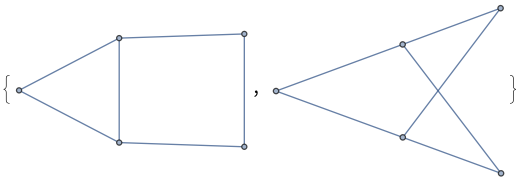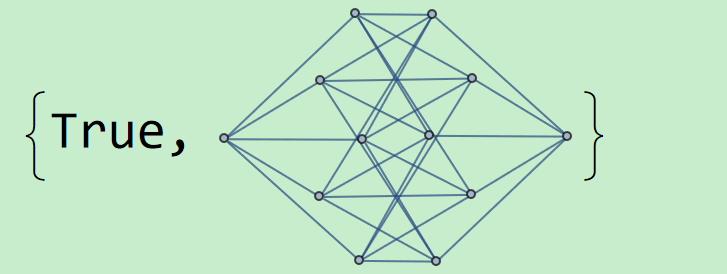As OP points out, one limitation is
Subsets[EdgeList@g,{5*VertexCount[g]/2}]
For example, if g is CompleteGraph[n] then there are Binomial[Binomial[n,2],5*n/2] many such subsets when $n$ is even, which for $n=10$ is equal to $3169870830126$.
OPs problem involves several conditions, but to get started, let us take the problem of listing all subgraphs where the vertex degrees are prescribed, in a more efficient way. For example
subgraphs[CompleteGraph[5],{3,3,2,2,2}]
should return all subgraphs where vertices 1,2,3,4,5 have degrees 3,3,2,2,2 respectively. To remove isomorphic ones, one would use
subgraphs[CompleteGraph[5],{3,3,2,2,2}]//DeleteDuplicates[#,IsomorphicGraphQ]&
Using the code below, the result is

What algorithm? I use the following. Step 1: Choose a subset of the edges starting from vertex 1 (as many as needed). Step 2: Choose a subset of the edges starting from vertex 2 to vertices $>2$ (as many as needed taking into account that we may already have selected an edge from vertex $1$ to vertex $2$). Step 3: Choose a subset of the edges starting from vertex 3 to vertices $>3$ (as many as needed taking into account that we may already have selected edges from vertices $<3$ to vertex $3$). And so on.
In this approach, the choice made at Step 1 influences the choices available in later steps, and so on. Probably there is a clever way to implement this kind of "dependent choice" problem exploiting functionality available in Mathematica, but I came up with the following using recursion:
to[g_]:=Lookup[GroupBy[List@@@EdgeList[g],Min,Max@@@#&],
Sort[VertexList[g]],{}]-Sort[VertexList[g]];
from[sg_]:=Graph[Join@@MapIndexed[Function[{x,p},
Map[UndirectedEdge[First[p],#]&,First[p]+x]],sg]];
subgraphs[{},{},{}]:={{}};
subgraphs[el_List,d:{__Integer},max:{__}]:=If[Length[el]===Length[d],
If[MatchQ[d,{___,_?Negative,___}],{},
Join@@Map[Function[{s},Map[Join[{s},#]&,subgraphs[Rest[el],
MapAt[#-1&,Rest[d],Transpose[{s}]],Rest[max]]]],
Subsets[First[el],{First[d]}]//If[Length[#]>First[max],
#[[1;;First[max]]],#]&]],Abort[]];
subgraphs[g_Graph,d:{__Integer},max_:{}]:=Map[from,subgraphs[to[g],d,
If[max==={},ConstantArray[Infinity,Length[d]],max]]];
Examples (now including BipartiteGraphQ).
- The example mentioned by OP is obtained using
Select[subgraphs[CompleteGraph[{6,6}],ConstantArray[5,12]]
//DeleteDuplicates[#,IsomorphicGraphQ]&,BipartiteGraphQ]
and takes about 1 second, which is much faster than OPs code

Unlike OPs program, this program makes a complete list, therefore we can also conclude that this is the only subgraph that satisfies the criteria, up to isomorphism.
- It also works for
CompleteGraph[10] using
Select[subgraphs[CompleteGraph[10],ConstantArray[5,10],
Join[{1},ConstantArray[Infinity,9]]],BipartiteGraphQ]
This takes about 250 seconds. The result is

The result itself is not very interesting, it is simply CompleteGraph[{5,5}], but the point is that the computation finished in 250 seconds. But note that in this last example, I called subgraphs with three arguments, the third argument being {1,Infinity,...,Infinity}. The point of this is to restrict the search space a little bit. The 1 in this case says that in Step 1 only one choice is made. This is no big deal in the case of CompleteGraph[10] since all those choices are isomorphic.
Note. The code assumed that the vertex labels are numbers.





